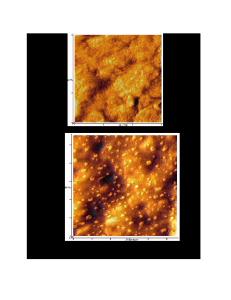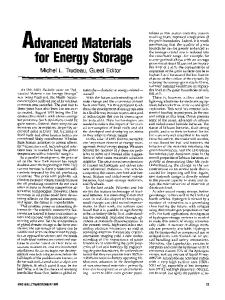Storage of Electrical Energy
- PDF / 324,066 Bytes
- 18 Pages / 595 x 842 pts (A4) Page_size
- 11 Downloads / 407 Views
Storage of Electrical Energy∗ Batteries and Supercapacitors Trilochan Bagarti and Arun M Jayannavar
In this article, we will focus on the development of electrical energy storage systems, their working principle, and their fascinating history. Since the early days of electricity, people have tried various methods to store electricity. One of the earliest devices was the Leyden jar which is a simple electrostatic capacitor that could store less than a micro Joule of energy. The battery has been the most popular in storing electricity as it has higher energy density. In this article, we will describe and compare the working of various kinds of batteries and capacitors. We will review the recent technological breakthrough in electrical energy storage devices.
Trilochan Bagarti is a Researcher at Graphene Center, Tata Steel Limited, Jamshedpur. He works in the application of graphene in various systems.
Introduction Electricity was known to many cultures as a mysterious force of Nature since ancient times. The first scientific study was published in 1600 by William Gilbert in De Magnete, and until the beginning of the nineteenth century, no useful application of electricity existed. Today, we are all surrounded by various devices that use electrical energy to function. Energy is stored in the chemical bonds of the materials that are cleverly chosen to make the batteries of these devices. However, more than a hundred years ago, when people were just beginning to understand the nature of electricity with their intriguing experiments, mostly on static electricity, a very simple and useful device was invented— the Leyden jar. It was the first device that could store electrical energy. It consisted of a glass jar with a conducting foil coated on the inner and outer surfaces, and a metal electrode connecting the inner foil that projects through the stopper at the mouth ∗ Vol.25,
Arun M Jayannavar is a senior scientist at Institute of Physics, Bhubaneswar. He is interested in general condensed matter physics and emergent phenomena.
Keywords Battery, supercapacitor, pseudocapacitor, graphene, electrical energy.
No.7, DOI: https://doi.org/10.1007/s12045-020-1012-0
RESONANCE | July 2020
963
GENERAL ARTICLE
Figure 1. The Leyden jar: Invented by Ewald Georg von Kleist and Pieter van Musschenbroek in 1745–46. (Image Source: wikipedia.org)
The voltaic pile was used immediately to split water.
Figure 1. The capacitors that are manufactured today have fundamentally the same design except that they have become more efficient in storing energy. Today a capacitor can store billions of times larger energy than that of a Leyden jar. How this has been achieved in the course of the past several decades is most fascinating. In the following sections, we shall discuss about batteries and capacitors, and their uses in electrical energy storage. We will see how nanotechnology has enabled the production of supercapacitors. With the recent breakthrough in nanotechnology, it appears that the specific energy of supercapacitors may be co
Data Loading...











